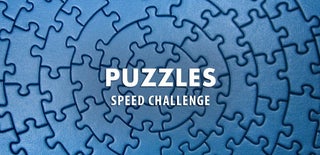Introduction: Puzzle Piece Class "quilt"
Not an ideal year for it but I'm sure with a little extra work this could be done through distance learning. This is a quick, relatively easy "get to know you" craft perfect for the first day of school, or a fun way to get to know your friends/family!
The idea is to be able to display a little something of everyone in the class all together or to help compile information about a greater topic.
Supplies
- Cardboard box
- White paper
- Coloring/decorating items (markers, crayons, glitter, google eyes, etc.)
- scissors or X-acto knife
- Group of friends or class of children
Step 1: Find a Box and Mark It Up
First you're going to find a box. Ideally this box will have a flat side large enough to split evenly between your class size. Since mine is just a test box it is a bit smaller, as I just used a handful of friends and family to color it.
Once your box is selected you'll want to flatten it and cut it cleanly to one flat surface, it is ok if it is taped together but try to avoid folded creases as they will make connections a little weaker.
Draw out some puzzle pieces. These can be conventional puzzle shapes with bumps and corners or just generic shapes like squares or triangles. For mine I split my cardboard into 12 equal squares then drew little bobbles out of some of the edges and curved or pointed some of the corners.
Step 2: Cut and Prep
Cut out all your pieces, for anything thicker than a cereal box this is best done with an X-acto knife, but can also be done with scissors and a little extra care.
Once all pieces are cut out you will need to trace them all onto white paper*, I used some scrap that was printed on the other side and it worked just fine, nothing on the "bad" side is visible through the paper once glued down. Make sure you trace all your pieces with the same side up if you are using recycled paper otherwise your already printed side may end up being the side you wanted up.
Once paper is cut, assemble your puzzle and lay out the paper pieces on top of the cardboard ones to make sure there aren't any hug gaps or overlap, trim as needed.
Next find your favorite adhesive, disassemble your puzzle and carefully glue each paper piece to its respective cardboard piece. I tried regular white liquid Elmer's glue, rubber cement and Mod Podge for my test puzzle and found I liked the look of the rubber cement best. I found the Elmer's glue was more prone to wrinkles and the Mod Podge showed the cardboard pattern more than the rubber cement. All stuck perfectly fine and there wasn't a huge difference, so don't worry about finding rubber cement if you have an over abundance of Elmer's glue already.
Let dry completely before moving on.
*Disclaimer: It may seem easier to cover your cardboard with the white paper before cutting it out so you only cut once, but this can cause weird seams on pieces. Cutting cardboard first ensures each piece has an even solid covering with no overlaps or gaps in the middle.
Step 3: Coloring!
Now for the fun part!
Give each student a puzzle piece and let them decorate!
Once all decorated reassemble and display.
Step 4: Variations
Digital- Depending on how invested you get in this and how trustworthy your students are I have two ways to convert this to digital...One being to create a goodle draw (or similar document) and paste a blank puzzle picture into it, save it as the background and share with students assigning each a puzzle piece. Two send out pieces (digitally or physically) and have each student send it back colored. If digitally paste all into a photo editing software and "cut" around each piece and puzzle together, if physically piece back together and send a picture to students or post in a google classroom type "class".
Easier-Skip the cardboard, just use paper. Easier but much flimsier, better for quick projects that will not be displayed for long or are protected in a display case. If children can be trusted to gather together and not color on each other, could also skip cutting them out and have puzzle in a central location for coloring/adding to.
Preserved- To keep it a little more protected and together, mod podge over the entire assembled puzzle or use a puzzle-glue to keep together to help better display without falling apart.
Older kids/displays- Select a broader topic and have each child select something smaller within that topic to make their piece about and display together in a place people can see (bulletin board, hallway, table at family/parent night.
Display Ideas
- Animals- Penguins, Giraffes, Ants... tell more about the animals
- Ecosystems- Tundra, Desert, Wetland... list what makes these places them/what lives there
- Healthy Food- Apples, Broccoli, Whole Wheat... list benefits of foods
- Ways to be more eco friendly- Turn off lights, Reusable items, Recycling...how to and how they help
- Different people- Artists, Inventors, Authors... Tell us about them
- Favorite books- Like a mini book recommendation
- Vocab words- Could be new English words or for language learners...Words, definitions and a picture

Participated in the
Puzzles Speed Challenge











